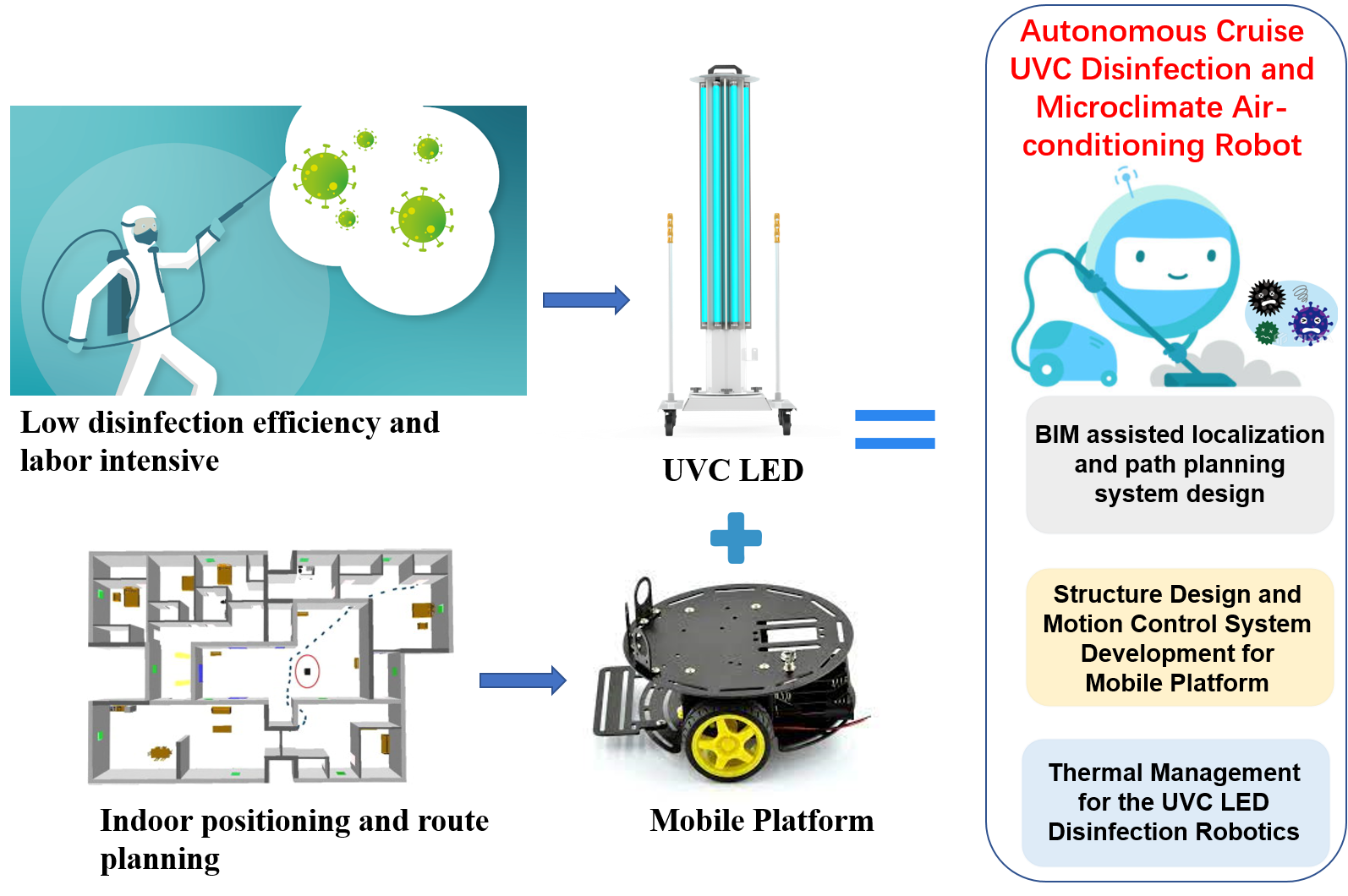Thermal Management for the Autonomous Cruise UVC Disinfection and Microclimate Air-conditioning Robot
Funding agency
Foshan Municipal Government, 2022-2024
Project introduction
Under the context of population aging and COVID pandemic, autonomous cruise disinfection robotics is in great demand. There are two objectives of this proposed research: (a) the indoor temperature and humidity sensing and control to create a highly efficient disinfection environment for the UVC LED robot; (b) LED module heat dissipation enhancement to extend expected working hours of disinfection robot. Existing studies have found that the indoor temperature and humidity has a profound impact on the disinfection efficiency of UVC LED devices. However, this effect was largely overlooked by existing products. The proposed study plans to apply Computational Fluid Dynamics (CFD) simulation to sense and predict the temperature and humidity level of the surroundings of the disinfection robot. Based on which, the model predictive control (MPC) will be applied to control the thermal environment to enhance the disinfection efficiency, and the route planning will be optimized. Additionally, around 95% of LED’s input power is dissipated as heat. Poor heat dissipation design will significantly reduce the expected working hours of LED module. In this study, we plan to apply to use CFD simulation to predict the heat dissipation of LED module. Based on which, heat dissipation enhancement technologies (such as heat pipe, phase change materials, graphite, etc.) will be tested and applied to reinforce the heat dissipation and to extend the LED’s expected working hours. The proposed research is an important part of the UVC LED disinfection robot project, as it is aimed to provide a more efficient, robust, and secure working environment for the UVC LED disinfection robot.

